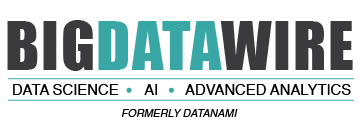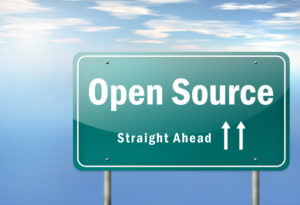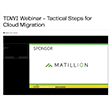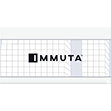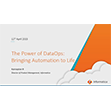
Grafana’s Annual Report Uncovers Key Insights into the Future of Observability
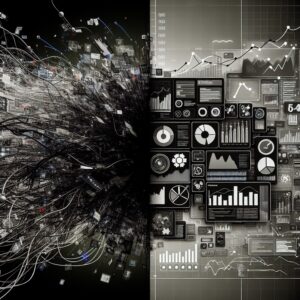
Source: Shutterstock
The architecture of modern systems has reached a tipping point where observability is no longer optional, it’s become existential. With advancements in Kubernetes and OpenTelemetry reshaping operational strategies, organizations are turning to open-source solutions to tackle the challenges of complex and distributed systems.
Open-source solutions have emerged as the backbone of this shift, and this is evident in the numbers. More than three-quarters (76%) of organizations are now relying on open-source observability tools, with 70% reporting that their organizations use both Prometheus and OpenTelemetry in some capacity. Half of all organizations increased their investments in both technologies for the second year in a row.
These insights come from Grafana Grafana Lab’s 2025 Observability Survey which collected responses from over 1,200 observability practitioners and leaders around the world.
Open-source observability tools come with clear advantages. They offer enhanced interoperability, which makes it easier to integrate these tools with diverse systems. Additionally, their vendor-neutral nature allows for flexibility in switching tools without the risk of being locked into proprietary ecosystems.
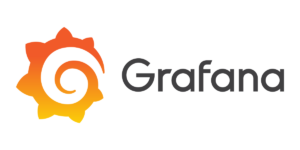 According to the Grafana survey, business leaders are aware of the importance of observability, with CTO/C-suite being the most common group to recognize it as business-critical, accounting for 33% of respondents. This was followed by 23% at the director level. Grafana sees this as a clear sign that observability has reached critical mass, with its significance extending beyond individual teams and gaining strategic attention at the highest levels of organizations.
According to the Grafana survey, business leaders are aware of the importance of observability, with CTO/C-suite being the most common group to recognize it as business-critical, accounting for 33% of respondents. This was followed by 23% at the director level. Grafana sees this as a clear sign that observability has reached critical mass, with its significance extending beyond individual teams and gaining strategic attention at the highest levels of organizations.
While observability continues to gain momentum, the respondents shared that complexity is still the number one challenge. To help combat this, organizations are turning to AI-powered data observability. These technologies can help reduce the cognitive load on teams and enhance the ability to monitor, analyze, and respond to system behaviors effectively.
However, AI and ML adoption remains in its early stages with only 19% listing it as a priority. Larger companies, with over 5,000 employees, are more likely to use these technologies, according to the report. Among the most sought-after features are training-based alerts, which help reduce noise and alert fatigue, and faster root cause analysis, enabling quicker resolution of incidents. As the complexity of systems grows, we can expect greater demand for AI assistance.
Cost is an important factor when choosing observability tools, with 75% of companies prioritizing it. While there’s no industry standard for spending on observability relative to infrastructure, the survey responses showed an average of 17%. A median and mode of 10% suggest that may be a reasonable benchmark.
Notably, teams utilizing service level objectives (SLOs) placed cost savings as their least important goal. Instead, their primary focus is on accountability. This shift underscores that organizations are prioritizing value and effectiveness over cutting costs.
Grafana Labs is known for Grafana, a widely used open-source platform for visualizing and analyzing data from various sources. This year’s report is the third edition of its annual Observability Survey. A key focus area for this year’s report is how organizations are grappling with unprecedented complexity in their tech ecosystems.
“Our 2025 Observability Survey confirms that organizations are embracing a diverse, open source-centric approach to observability,” said Tom Wilkie, CTO, Grafana Labs. “With teams managing more tools and data sources than ever before, the findings show that complexity remains the top challenge.”
Building on these findings, Wilkie emphasized Grafana Labs’ aim to address these challenges head-on. “We’re working to directly address these pain points by enhancing interoperability between technologies like OpenTelemetry and Prometheus, reducing the cognitive load through AI-powered features, and providing out-of-the-box integrated solutions like Kubernetes Monitoring.”
Grafana provided an analysis of the different approaches to observability highlighted in the survey. According to the findings, more companies are moving toward centralized observability models, which provide a unified system that avoids the silos created by operations-led approaches. This shift reflects a focus on addressing persistent challenges, such as managing complexity and reducing noise.
The move toward centralized observability aligns with the growing adoption of OpenTelemetry and Prometheus, as they offer the standardization and scalability needed to unify data across systems.
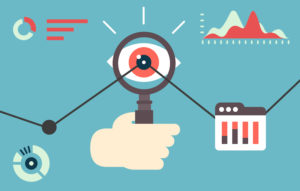 According to Grafana, companies are taking a multi-pronged approach to their data challenges. “Our survey data confirms what we’re seeing in the field – organizations aren’t choosing between observability technologies, they’re embracing multiple approaches to solve real-world problems,” said Ted Young, developer programs director at Grafana Labs, cofounder of OpenTelemetry, and member of the OpenTelemetry Governance Committee.
According to Grafana, companies are taking a multi-pronged approach to their data challenges. “Our survey data confirms what we’re seeing in the field – organizations aren’t choosing between observability technologies, they’re embracing multiple approaches to solve real-world problems,” said Ted Young, developer programs director at Grafana Labs, cofounder of OpenTelemetry, and member of the OpenTelemetry Governance Committee.
“This includes the growing adoption of both OpenTelemetry and Prometheus, two tools that work great together. As an organization that contributes to both projects, we are uniquely positioned to help organizations navigate this hybrid landscape with tools designed for interoperability from the ground up.”
Grafana Labs shared that the insights from this year’s Observability Survey will help it shape its products and services. It plans to continue integrating the survey results in its development efforts, enabling it to keep pace with the evolving demands of the market.
Related Items
Data Observability ROI: 5 Key Areas to Construct a Compelling Business Case
There Are Four Types of Data Observability. Which One is Right for You?
Tapping into the Unstructured Data Goldmine for Enterprise in 2025
